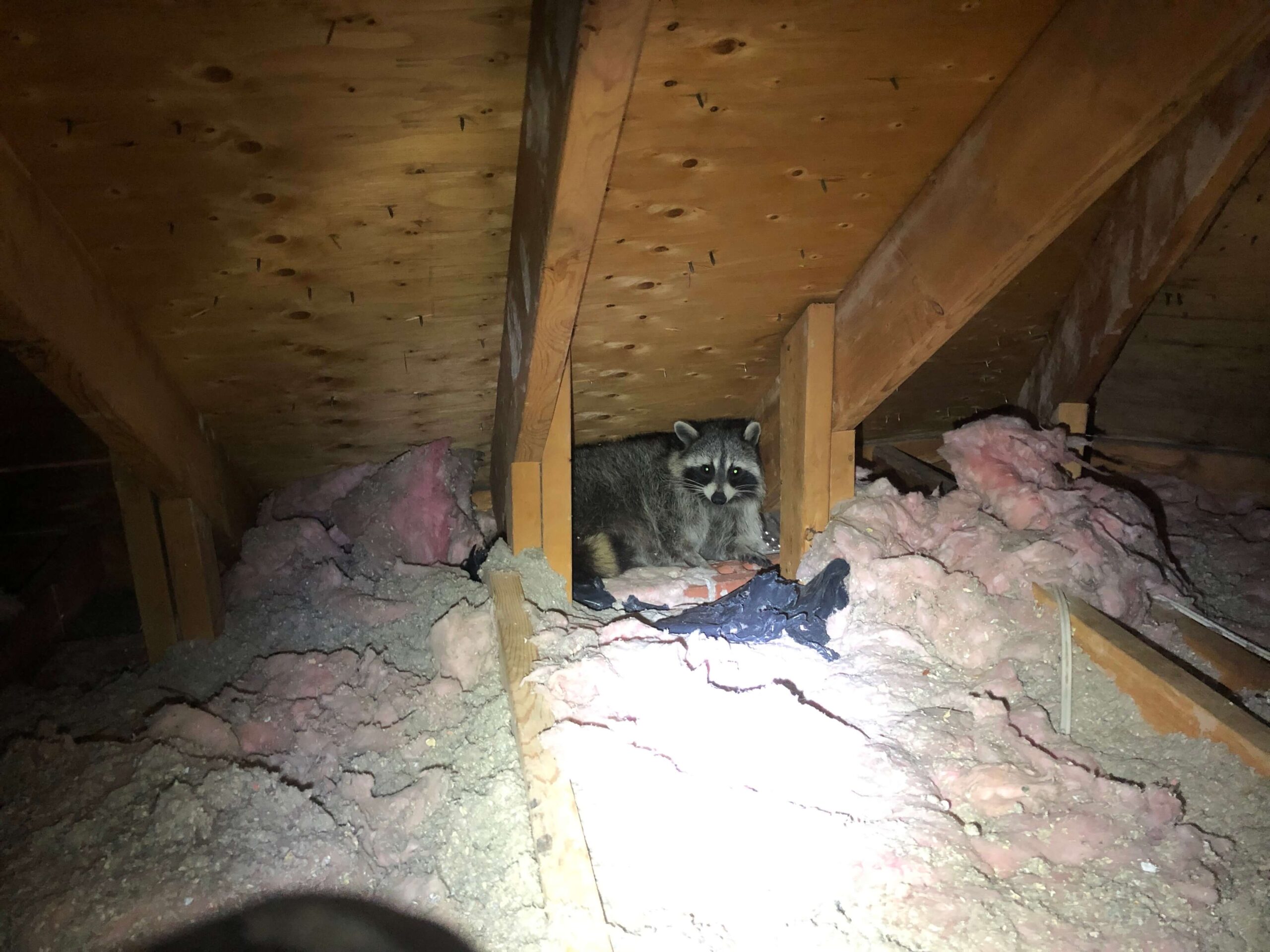When you call for raccoon removal in Madison, you may need to get rid of more than a few furry thieves. Raccoons, like many wildlife, leave scat behind, posing a serious health threat to those who come in contact with it. If you have raccoons on your property, here’s everything you should know about latrines and their removal.
How To Identify a Raccoon Latrine
Latrines tend to be large since several raccoons all use the same one. The smell is pungent and described as a mixture of feces and urine. Though the color of raccoon scat can vary with the animal’s diet, it’s generally dark-colored. The shape is tubular and may have blunted ends.
While raccoons may create latrines anywhere, some places are more common than others:
- Under-deck spaces
- Haylofts
- Attics
Raccoons generally create latrines away from their living spaces, so if you find a den, there’s likely a latrine hidden nearby.
Why Raccoon Latrines Are Dangerous
All animal feces contains bacteria, which is one reason homeowners should be careful around raccoon latrines. However, these nocturnal mammals also pose another danger: roundworms.
These parasites enter the body through the mouth, then infect the digestive tract. The feces of the infected creature contains roundworm eggs, which can go on to infect others. Humans and pets can become infected by ingesting feces or touching their faces after coming into contact with it.
A roundworm infection can cause stomach pains, vomiting, malnutrition, and fever. In children, it can cause growth delay. Fortunately, physicians can treat this condition with a prescription, but it’s an ordeal no one should experience.
How To Keep Raccoons Out of Your House
The best way to avoid cleaning up a raccoon latrine is to keep these pests out of your home in the first place. The following are great tips to safeguard your house:
- Use animal-repellent spray
- Lock your trash and composting bins
- Trim tree branches to keep them from growing too close to your roof
Why You Should Leave Raccoon Latrine Clean-Up to the Professionals
Once homeowners realize they have raccoons on their property, they may ask, “How do I get rid of a raccoon latrine?” However, wildlife removal experts and public health agencies advise you to leave this job to professionals.
For one thing, raccoon latrine removal requires protective gear:
- N95-rated respirator
- Disposable booties or rubber boots
- Disposable gloves
- Plastic bags
- Shovels
Anyone attempting to clean on their own would need to purchase these items. Once used to clean a latrine, they can’t be used for anything else, as that would risk contamination. Professional removal services have high-quality equipment in their budget, ensuring their personnel and your home are protected.
There’s also the issue of physical removal. As a homeowner, you likely don’t have the necessary training to handle this hazard safely. Wildlife control experts know how to reduce the risk of contamination while working quickly.
Finally, cleaning up a raccoon latrine is, quite frankly, distasteful. Depending on the number of raccoons, it could take a while to remove them. Because of the high contamination risk, you may even have to remove a few inches of material underneath the latrine. Doing so while wearing a respirator, working in a cramped space, and dealing with a foul odor is more than many people can handle. Why not pay someone qualified to take care of this issue so you don’t have to?
Do you have a raccoon problem? If so, Skedaddle Humane Wildlife Control can help. Our Clear and Clean service ensures the removal of raccoons as well as any contamination left behind. We clear out dens and latrines so you don’t have to worry about the threat of disease in your home. For more information, give us a call or contact us online.




